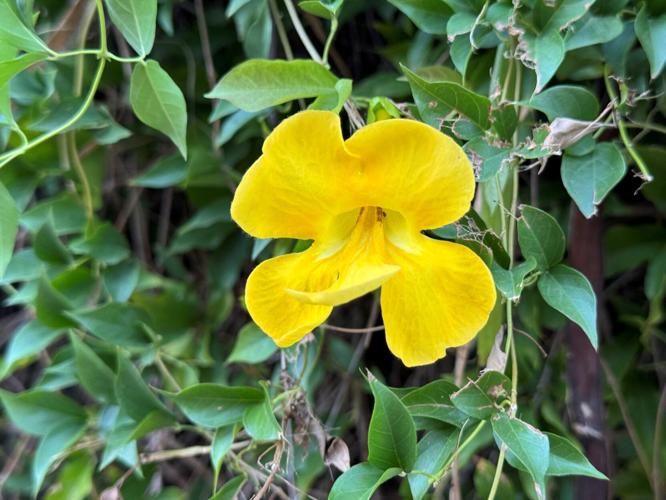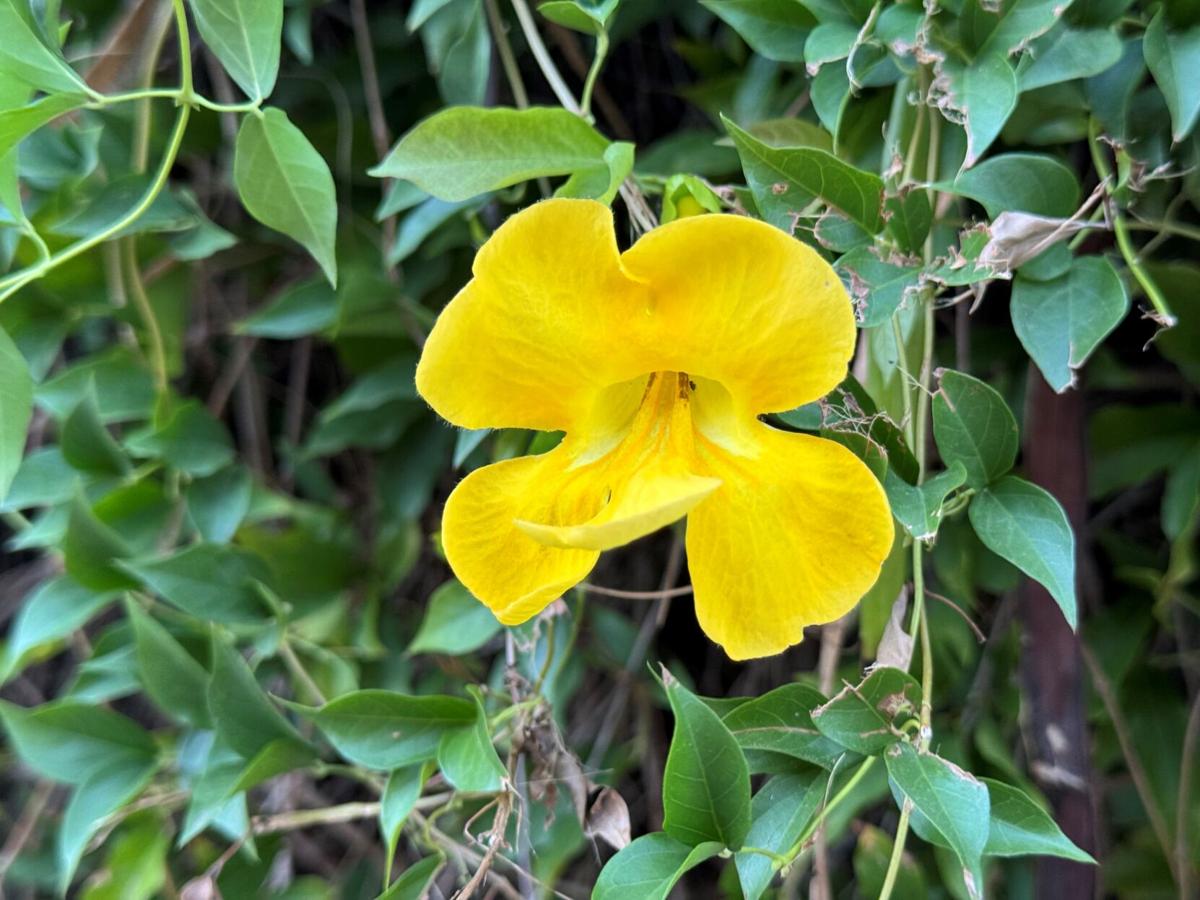Catclaw vine (Dolichandra unguis-cati) draws you in with its gorgeous lemon-yellow trumpet flowers and its deep green leaves. It does well in our hot sun and can climb over almost anything. But is it a good idea to plant it in your garden?
Catclaw vine originates in Mexico and South America, and is also found in the Caribbean. In many other places with tropical climates, however, it is terribly invasive. Australia, New Zealand and South Africa all consider it an invasive weed and regulate the plant.
It’s also taking over Florida and other southern states, is problematic in Hawaii, and is considered an invasive in Texas. Many states are now working hard to eradicate this plant from native habitat and parks. In areas where it has naturalized, it kills native plants, suffocates trees and is almost impossible to remove permanently.
In Arizona, it is still recommended by some websites due to its drought-tolerance and ability to thrive in our hot sun. It is one of the few plants that can be planted in full sun against a wall or fence. It is very fast growing, and thus has great potential for covering hot areas where gardeners may want a bit of greenery.
But there’s no doubt that it’s a major problem, too. While it doesn't seem to have spread (yet) to wild areas in Arizona, it is certainly a thuggish plant in the backyard. Once planted, you can’t be rid of it. Clipping back two to three times a year may control it, but it will eventually damage whatever surface it is growing on, destroying stucco and knocking down fences with its weight. Of note, it’s also toxic to some animals, including cats and some birds.

This closeup shows how the roots of the catclaw vine penetrate stucco masonry. This causes permanent damage to walls.
I have a catclaw vine growing on my house (I didn’t plant it), and it requires constant trimming back. I have already had to re-do the stucco once in the areas where it grows, because its tiny roots infiltrate between the pores of the stucco and tear it apart. No matter how hard I cut it back (to the ground) it always grows back and within a month or two is at roof height again. Some gardeners recommend planting it only in containers, but from there it can easily spread by seed in your garden or to other locations.
There’s no doubt it is a beautiful plant, but we need to ask ourselves: is it worth the risk? Catclaw vine reproduces in many ways. Its seeds can be spread by wind or water, its stems produce runners and tubers and grow new plants, and even its stem pieces can resprout. This makes it a very difficult, if not impossible plant to eradicate.
It’s only a matter of time before catclaw vine spreads to our washes, choking out trees, grasses and native wildflowers. A 2019 USDA Risk Assessment has indicated that catclaw vine has a high potential to establish itself in the wild in Southern Arizona.
I, for one, will attempt to get rid of my catclaw vine. This is not only because of the aforementioned environmental concerns but also because of the maintenance it enforces on me. I don't want to re-stucco my house every few years because of its destructive capabilities. I don’t want it to tear up my brick patio with its tubers and matted roots. I will cut it back to the ground, with the knowledge that I will need to do so frequently and probably forever. At least it won’t be producing seeds that can spread to other gardens.
For alternatives to catclaw vine, check out my article "10 cool vines to grow in Tucson."
Make more plants from the ones you already have. This video shows you how to propagate your plant using cuttings. Video by Dominika Heusinkveld/Arizona Daily Star






